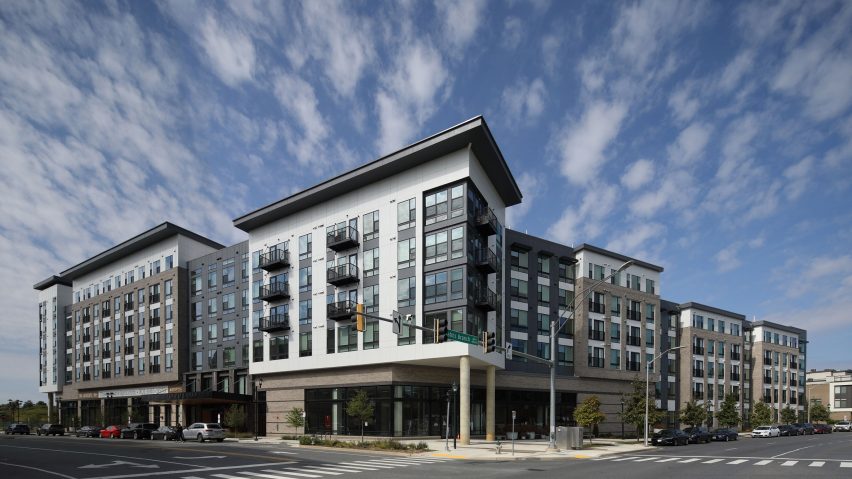
Montgomery County has found a way to reinvigorate public housing in America
As part of Dezeen's Social Housing Revival series, we look at how one county in Maryland is leading the way in the US after devising a novel public-development strategy to help combat its housing crisis.
Montgomery is a growing county on the outskirts of the Washington DC metropolitan area that has come up with a method for addressing the diminished role of social housing in America.
Like much of the rest of the country, it is in dire need of more affordable housing.
While an absence of central government funding means public-sector-led house-building to meet that need is a rarity in the US, Montgomery's county government has conceived a way to deliver high-quality homes on its own.
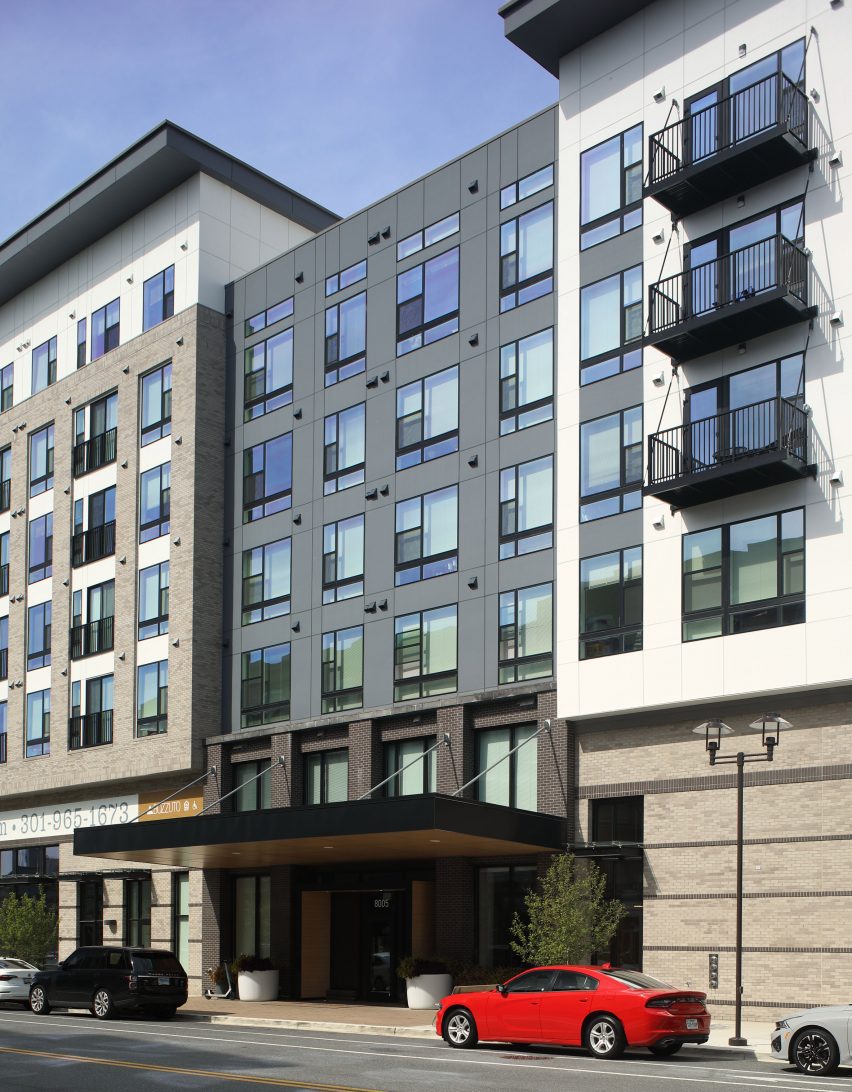
Its Housing Opportunities Commission (HOC), an agency founded in the 1970s to deliver federally funded public housing, has recently developed a strategy that it calls the public developer model.
In 2021, it established the Housing Production Fund (HPF) to fund mixed-income social housing.
Its first completed project using the model is The Laureate, a 268-home scheme designed by US architecture studio KTGY that features thousands of square feet of amenities and even has an outdoor heated pool and spa.
"We believe this should be the standard"
"HOC is proud that when you walk into The Laureate you experience a high-quality, high-calibre, and beautifully designed community that offers a resort-like living experience," HOC executive director Chelsea Andrews told Dezeen.
"We are equally proud that if you're standing in an affordable home or one that rents at market rate, the two are completely indistinguishable."
"We believe this should be the standard for all new affordable housing development."
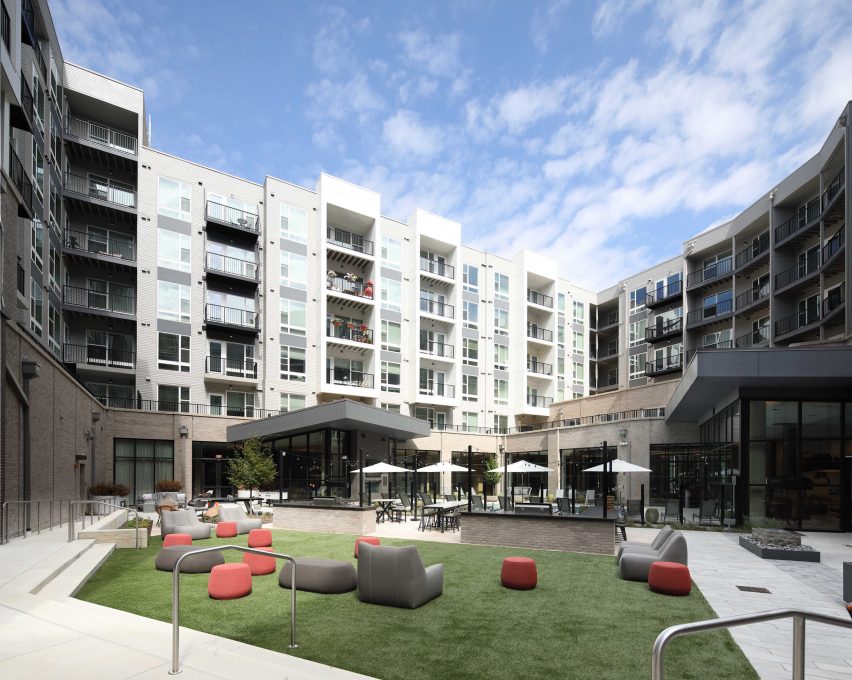
In most parts of the US, cities use tax breaks to encourage developers to deliver mixed-income housing.
The HOC takes a more direct approach, using federal subsidies to accommodate the poorest groups while taking out loans to fund other HOC projects.
Building federally subsidised housing often requires the involvement of private investors to fund the full cost of construction – which can mean build quality is compromised to protect profit margins.
By acting as a public developer and delivering housing for people on a range of incomes, the Montgomery County hopes HOC can build better housing and break down stigmas attached to social housing.
The model also allows the county to create housing for people in need of affordable housing but who do not qualify for Section 8 housing vouchers.
The buildings are managed by the HOC, which closely monitors the residents' incomes. Rents from people in higher income brackets help to contribute to poorer tenants' costs.

"Mixed-income housing plays a critical role in adequately addressing the housing crisis that we face in this country, as that strategy can bridge the gap in construction financing while creating a more holistic and diverse community," KTGY principal Ben Kasdan told Dezeen.
Montgomery County has two population centres – Silver Spring and Bethesda. Both are growing rapidly thanks to strong rail links to Washington DC.
The HOC is now targeting areas close to the train lines with further similar, high-density developments.
While architecturally speaking the projects tend to be unexciting, Center for Public Enterprise director Paul Williams believes that rapid delivery is the priority given the county's fast-growing housing need.
"Extremely ugly five-over-one public housing is orders of magnitude better than beautiful public housing that doesn't get built," said Williams, who advised Montgomery County on its programme.
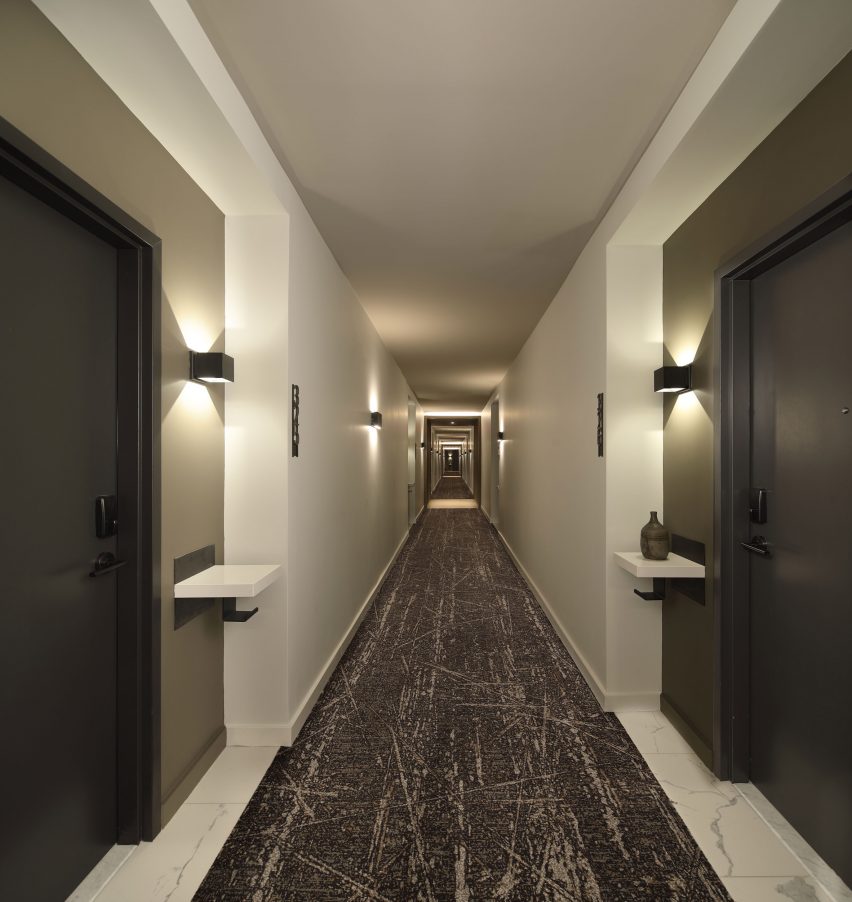
While the structures seem run-of-the-mill, they may represent an inventive way to begin to dig the US out of its deep housing crisis.
The traditional US public housing model runs on a system that was put in place nearly a hundred years ago. Housing authorities were created to manage the flow of federal funds from Congress-approved budgets and HUD to local governments.
However, after legislation in the 1990s limited social housing construction and its allocation to only the poorest in the country, many of the authorities have stagnated.
Activating stagnant agencies
"The model gives public housing authorities who at this point are largely just kind of stagnant entities something to do," said Williams.
"The constraint on how much affordable housing gets built in America is how many dollars Congress appropriates to low-income housing tax credit in each year's budget. People wish it was something else, but that's it."
By using this model, federal subsidies can go directly to the most in need, while the authority, running on a private-style investment model without the profit motive of private equity, can provide housing for people in the still-stressed but less desperate range.
However, stagnant housing authorities don't change overnight.
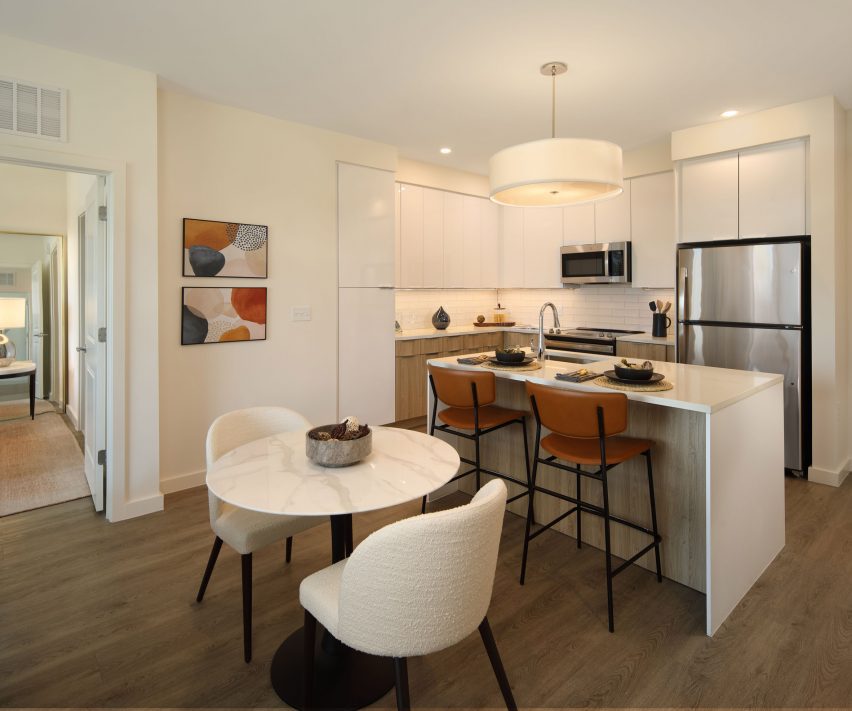
Montgomery County has a long history of innovation in public housing. Being so close to the nation's capital, it has often been a hotbed of policy experimentation.
"The social justice movement that swept across the US in the 1970s had a tremendous impact on Montgomery County's approach to development of affordable housing," Andrews said.
"Dispersing new affordable housing developments throughout our county has served us well over the years and helped us shape the diverse neighbourhoods that make our county so vibrant."
Williams said that his organisation is helping other cities adopt similar models, using the levers of the finance system to create immediate solutions to the problems of the housing crisis – as a complete overhaul of the American property system is unlikely to come any time soon.
"This is how we shift these housing authorities back to being active agents of inclusive economic development, as opposed to just being tubes through which Congress sends small amounts of money out to people," he said.
The photography is by Whitney Cox.
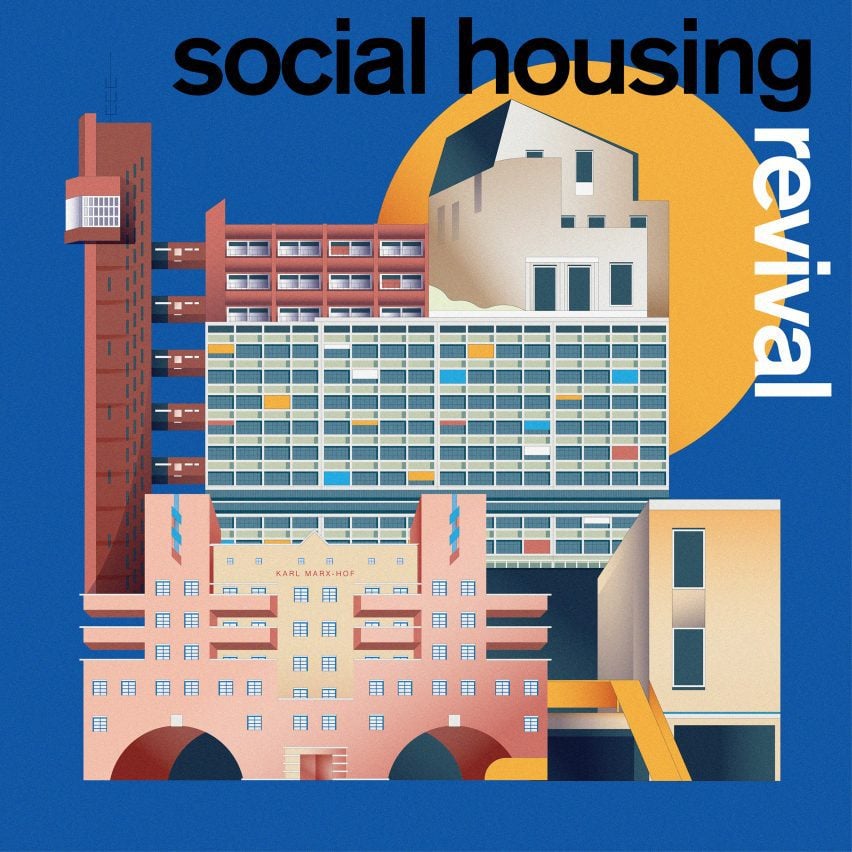
Social Housing Revival
This article is part of Dezeen's Social Housing Revival series exploring the new wave of quality social housing being built around the world, and asking whether a return to social house-building at scale can help solve affordability issues and homelessness in our major cities.